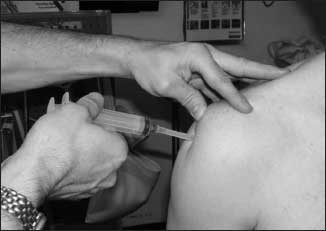03/03/2013
Réduire une luxation d'épaule antéro-interne
Il existe de nombreuses technique de réduction (voir ici). Quelques vidéos ici
1. Prendre en charge la douleur procédurale:

2. Réaliser la manoeuvre de réduction:
The FARES method, FARES standing for "FAst, REliable and Safe (sic)", is a one-operator technique to reduce anterior shoulder dislocation. This technique utilises a new combination of mechanisms - traction, oscillation, and leverage to reduce the humeral headback to the glenoid. With the patient lying supine, the operator holds the patient's hand on the affected side while the arm is at the side, allowing elbow fully extended and the forearm in neutral position. In the original paper, no sedation or analgesic was required because comparing the pain scores of the different methods was one of the objectives in their study. Next, the operator gently applies longitudinal traction and slowly the arm is abducted. At the same time, continuous vertical oscillating movement at a rate of 2-3 "cycles" per second is applied throughout the whole reduction process. The vertical movement should be short-ranged at about 5 cm aboveand below the horizontal plane. Since passing the 90° abduction, the arm is gently externally rotated with the palm now facing upward while keeping the vertical oscillation and traction. Reduction usually occurs at 120° abduction. If reduction does not occur immediately, continue the oscillatory movement while slightly increase the traction force until reduction occurs. After successful reduction, the arm is internally rotated and adducted across the chest to bring the forearm to rest in front of the patient
| Tags : réduction

Les commentaires sont fermés.